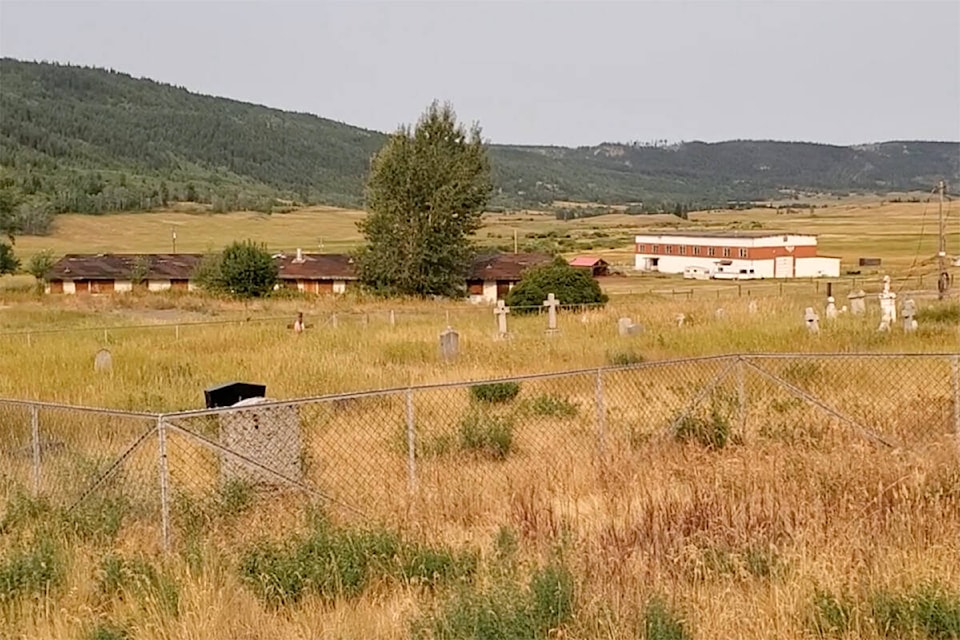Williams Lake First Nation (WLFN) will be releasing preliminary results from the first phase of its St. Joseph’s Mission Residential School site investigation Friday, Dec. 10.
“We’re grateful that we were able to complete the first phase of our geophysical research and will be in a position to have some greater clarity about the results of the ground penetrating radar and other technical investigations as we close out 2021,” said WLFN Chief Willie Sellars.
St. Joseph’s Mission was established in 1867 by Roman Catholic Oblate missionaries in an area just south of the current WLFN community of Sugar Cane.
In 1886, St. Joseph’s became an Indian Residential School and remained one until it was closed in 1981.
Project co-ordinator Whitney Spearing told Black Press Media the geophysical works completed are around the historic buildings on the property — the gym, the barn and where the school was.
“That vicinity is completely done, except for one very small patch that needs some technical equipment to get it done. Those are the findings that will come out, the work done with the ground penetrating radar (GPR) and an electric resistivity and magnetometer,” Spearing explained.
There are also some findings from Lidar, or laser scanning, that was done by fixed wing and by walking around the immediate historic grounds and inside a couple of the buildings. The information gathered from the terrestrial, or walking probe, has been used to create a 3-D model.
Archival research continues as well, Spearing said.
On July 19, 2021, WLFN put out a request asking for any information that would help with the investigation and Spearing said since then they received two ‘really good’ photographs.
READ MORE: WLFN establishes email to share information regarding former St. Joseph’s Mission investigation
“The two that did get sent in were from angles that we did not have.”
The photographs showed some places that residential school survivors have named in interviews, she added.
“That’s critical. If people do have photos we are definitely here to scan them. They don’t have to give us the originals.”
Spearing said they are working with the provincial Attorney General and Public Solicitor General regarding access to records that involve persons of interest reports and other compiled documentation gathered during the Truth and Reconciliation Commission hearings held between 2007 and 2015.
“All of the geophysical research eventually has to tie back to people. That’s the end goal, not to know how many anomalies there are but to actually to be able to correlate who may potentially be buried out there on the site.”
Personal interviews also continue with people who attended St. Joseph’s.
“It has been steady, but again we are encouraging people if they do know something or have something they want to talk about to contact us,” Spearing noted. “It does not have to be necessarily about deceased or missing children. If they have an experience they want to shed light on we are very interested to hear those stories as well. We are not trying to pigeon-hole people as to what they have to say. It’s very much their truth.”
Spearing said the research team has been reviewing a collection of photographs from St. Joseph’s Mission belonging to the personal archives of Charlene Belleau, former Esk’etemc Chief.
Belleau was appointed by the BC Ministry of Indigenous Relations and Reconciliation to act as a communication link between B.C. First Nations communities and federal and provincial government agencies, and provide advice to the province on matters related to former residential school and hospital sites in B.C. Sheis also working with Spearing’s team.
“There are tons of photographs of the children who were there at the mission, but also the staff and the nuns and it looks like quite a few members of the public at large from Williams Lake as well too. We may be going through to try and identify everyone who is in those photos,” Spearing said. “They actually came to as slides so we digitized them.”
On the morning of Friday, Dec. 10 there will be a closed meeting with chiefs from all the communities impacted by St. Joseph’s Mission where the chiefs can ask questions.
In the afternoon there will be press conference at the WLFN administration building at 2561 Quigli Drive adjacent to Highway 97 at Sugar Cane.
“We know that everyone is eager to receive these results,” Chief Sellars said. “But we’re asking that everyone be patient and respectful of the process. Our key concern is the mental health and welfare of the survivors of St. Joseph’s, and that of their families. We’re trying to conduct this process in as orderly a fashion as possible.”
Spearing said in addition to Belleau, WLFN elder and professor Nancy Sandy is also working with the team and recently Dominique Melanson was hired as the residential school investigation co-ordinator.
READ MORE: Ground analysis of former St. Joseph’s Mission Indian Residential School gets underway Aug. 30
READ MORE: Ceremony held as investigation of St. Joseph’s Residential School grounds gets underway
news@wltribune.com
Like us on Facebook and follow us on Twitter
